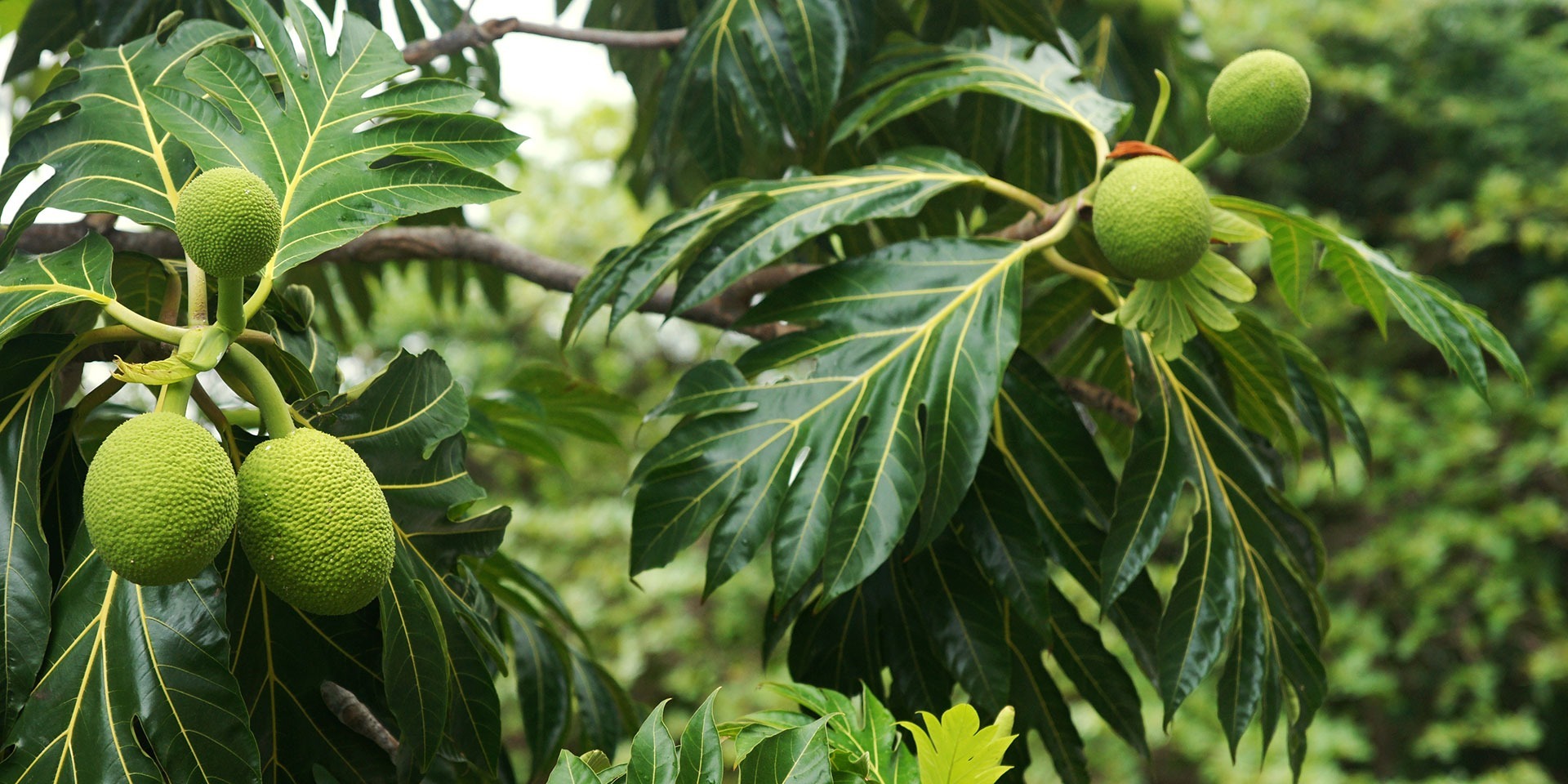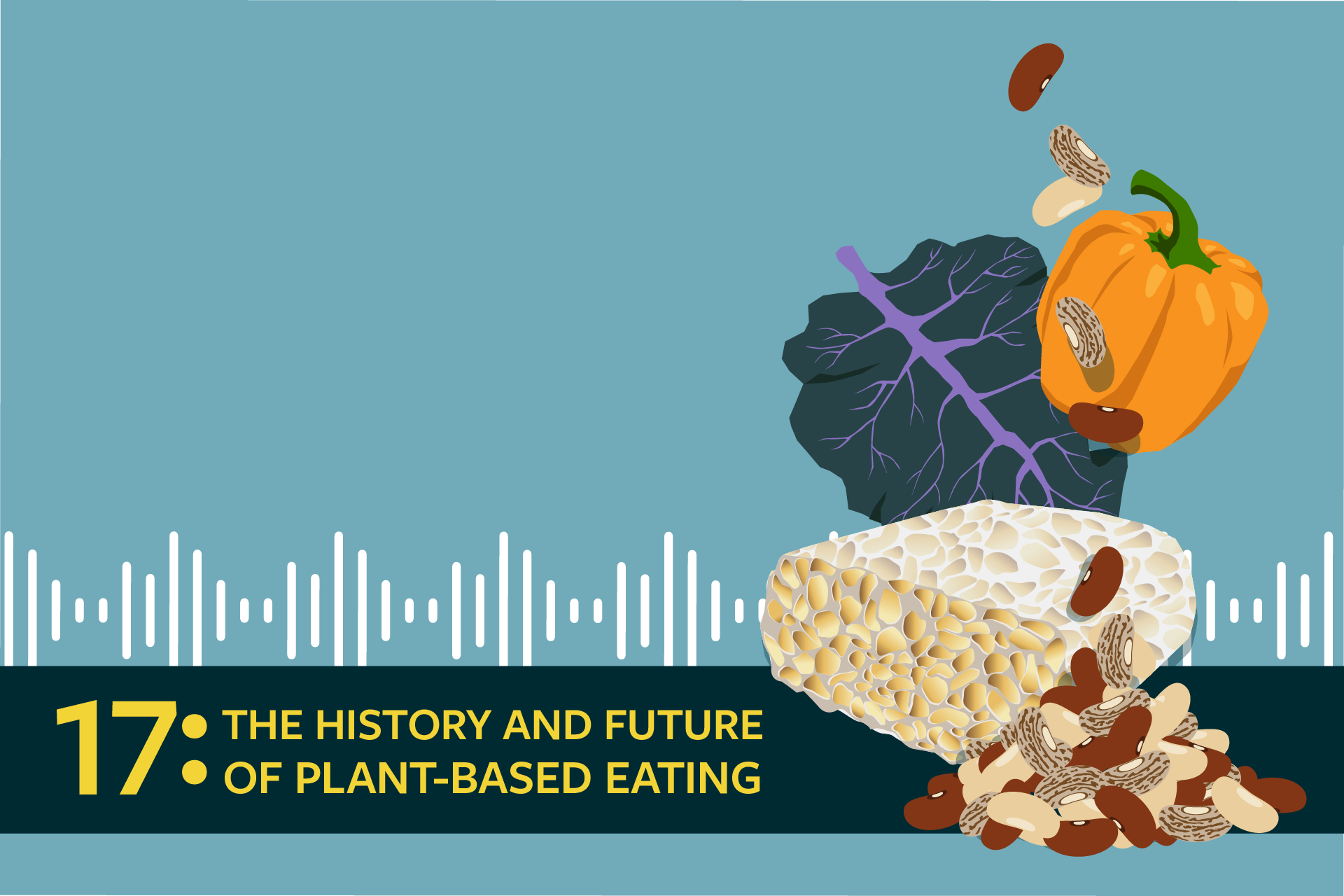Some foods are styled as ‘climate saviors.’ Who are they saving?
“I’ve read about breadfruit in history books,” a friend at dinner said excitedly, “but I’ve never actually eaten it.” We were at a restaurant in San Juan, Puerto Rico, about to be served a dish of breadfruit cannelloni in which the meat of this starchy vegetable had been turned into a thin tube of “pasta” and filled with cheese. This was a strange means of introduction to the very common fruit, which grows on trees and is encased in a thin green shell. In Puerto Rico, it’s most often eaten the way one would serve a green plantain: smashed, fried and salted, as tostones de panapén, the local name for it. When breadfruit ripens, it becomes soft and sweet; I first ate it in this mature state as a take on a beignet, a scoop of its tender flesh deeply caramelized in the fryer and dusted in powdered sugar.
Over the last decade, breadfruit has emerged from those history books and become more popular in the press as a “climate-resilient superfood.” These stories are always framed similarly, making claims like “Breadfruit Has All The Makings Of A Global Future Food Trend” (Forbes) or “Breadfruit, A Tropical Superfood, Could Help The World’s Hungry Tropics” (NPR).
But during the hottest summer on record, in 2023, I saw them falling, unripe, from a tree in my husband’s grandfather’s small yard in Vega Baja, Puerto Rico. I’d only ever thought about breadfruit when I was eating it or reading stories about its resilience to ever-warming global conditions. I was in shock to see there was a level of heat that could render breadfruit inedible. Wasn’t this the “climate-resilient superfood” I’d read about?
Breadfruit grows on trees that are in the mulberry family; the big green fruits do look like hard-shelled, overgrown berries. And it has, indeed, always been known to be reliable. That was its reputation in its home of origin, Southeast Asia: a food that would not let famine occur, beloved not because it was delicious, but because it would provide three harvests per year from October through June and because the harvested fruit could be preserved for those months the tree wasn’t producing. The plant was brought by colonizers of Spanish, French, Dutch and British origin to the Caribbean, where it would become an important cheap, abundant food source for the enslaved while the imperialists were creating their empires and plantations on the islands. (That’s why it was in the history books.)
Breadfruit has long been considered a “last-resort victual, a foodstuff mainly to be used in times of great scarcity,” writes Juliane Braun, a scholar of early American studies, in her article “Bioprospecting Breadfruit: Imperial Botany, Transoceanic Relations, and the Politics of Translation.”
But what happens, I want to ask, when the world becomes too hot for the food long considered an old faithful? The trees begin to stress, I read, when temperatures are regularly above 100 degrees Fahrenheit. Since seeing the fruit fall unripe during the hottest summer, I now read the headlines about its future potential with a sense of dread.
Turns out, this savior narrative has a long history in the United States. During the early post-Revolution period, the nation was cut off from its European wheat supply by Great Britain in retaliation. A burgeoning domestic wheat industry was easily felled by the Hessian fly, a pest that it remains quite susceptible to. As the population was verging on famine, President George Washington requested a breadfruit plant from Jamaica; newspapers of the time suggested that it could grow in the Southern states in order to easily and fruitfully feed the population. The plant died en route, but later, President Thomas Jefferson, too, would try to oversee a major planting of breadfruit in the U.S. inspired by the plantation system in the Caribbean.
As we now know, breadfruit didn’t become a staple crop in the young country. But the narrative around its potential to feed the population at some future date has remained an obsession of the media. A recent Atlantic article suggested that “too few Americans” are eating breadfruit, and that it might become more prevalent in the United States as the tropical region expands. It’s being grown more and more in Florida: “Although climate change remains overwhelmingly a destructive phenomenon, they [farmers] note, the expanding range of the breadfruit is one small silver lining.”
In Puerto Rico, where climate change is affecting not just the health of the lands but of the population, there is nothing hopeful about more breadfruit being grown in Florida. In 2023, parts of the archipelago hit 115 degrees, and it was the hottest September since 1899, the first year on record. What would be hopeful is slowed-down warming so that the breadfruit that exists here, and has been feeding people since the times of Spanish colonization, could continue to do so, as part of the culture, landscape and cuisine. If the tropical belt continues to expand and enables more breadfruit agriculture elsewhere, that would likely mean it is falling from the trees unripe in Puerto Rico. Those for whom it’s long been a reliable crop and piece of local gastronomy will be out of luck.
Narratives around foods of the Global South as potentially life-changing are rarely written from the perspective of those living on the actual front lines of the disastrous levels of heat that can be experienced — indeed, those stretches of 100 degree days do not seem like potential for new crops, simply unlivable for old ones.
This is a pattern (a pattern at least as old as the United States itself) through which a food is “discovered” and then rebranded to be foisted upon the nation. Breadfruit is written about on vegan websites as a meat alternative and is often labeled a “superfood,” not a technical term but a marketing one that originated in the early 20th century by the United Fruit Company to sell more bananas. It has a health halo about it; there’s a clear conflation of nutrition, sustainability and scaling potential when the media use this phrase, but it rarely, if ever, is any of it to the benefit of original growing regions.
In the early 2010s, it was quinoa — desirable for its protein and fiber — from Bolivia, where overproduction has exacerbated ecological and economic instability. The South American nation, late last year, experienced a catastrophic drought. Chocolate prices have increased, and will likely continue to, because of climatic conditions affecting West Africa, which produces 70 percent of the world’s cacao — another “superfood” lauded for its high levels of flavonoids that give it antioxidant and anti-inflammatory properties. Bananas, the original superfood touted for their levels of fiber, potassium, folate and antioxidants, will likely become more expensive as high temperatures drop yields. The exotification around these foods, which usually grow best in formerly or currently colonized lands, mirrors a desire for the escape of the tropical environment: They take on the same “healing” reputation as a beach vacation.
There is no “silver lining” to climate change for those nations least responsible for causing it but experiencing its effects most acutely. More people eating bananas, chocolate and quinoa hasn’t made the places where they grow more resilient, ecologically or economically. Breadfruit is delicious, versatile and exciting. But it shouldn’t have to save the world. The devastation of climate change might mean it won’t even be able to feed the people for whom it already grows.
Get the latest food news from FoodPrint.
By subscribing to communications from FoodPrint, you are agreeing to receive emails from us. We promise not to email you too often or sell your information.
Top photo by sergeicha/Adobe Stock.
More Reading
The FoodPrint guide to beans: Everything you need to know to buy, cook, eat and enjoy them
November 18, 2025
Your guide to buying and preparing a heritage turkey or pastured turkey this Thanksgiving
November 18, 2025
How Miyoko Schinner upped the game for vegan dairy
November 7, 2025
30+ things to do with a can of beans
November 4, 2025
In a beefy moment, beans?
November 4, 2025
Waste not, want not with “Ferment,” a new cookbook by Kenji Morimoto
October 1, 2025
For these cocoa farmers, sustainability and the price of beans are linked
September 17, 2025
You haven’t had wasabi until you’ve had it fresh — and local
September 11, 2025
How to make your kids’ school lunch more eco-friendly
August 19, 2025
No-cook meals: 40+ ways to enjoy peak summer produce without turning on your stove
August 12, 2025


